Dino Dini is an Italian-British video game developer and creator of the Kick Off series of football games. He was a lecturer at the NHTV Breda University of Applied Sciences in the Netherlands, teaching game programming.
Christopher Sawyer is a British video game designer and programmer. He is best known for creating Transport Tycoon, which has been considered "one of the most important simulation games ever made", and the best-selling RollerCoaster Tycoon series.
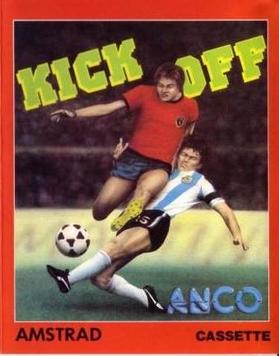
The Kick Off franchise is a series of football simulation video games created by Dino Dini. Kick Off was published by Anil Gupta's publishing house Anco Software for the Atari ST and Commodore Amiga. First released in 1989, Kick Off was well-received and won awards.

Star Wars is a first-person rail shooter designed by Mike Hally and released as an arcade video game in 1983 by Atari, Inc. It uses 3D color vector graphics to simulate the assault on the Death Star from the 1977 film Star Wars. There are three connected gameplay sequences: combat against TIE fighters in space, flying across the surface of the Death Star, and the final trench run. The sequence repeats with added complications and the Death Star regenerating for each. The player's X-Wing fighter has a shield which only protects against damage a certain number of times, then the next hit ends the game. Speech synthesis emulates actors from the film.

RollerCoaster Tycoon 3 is a 2004 construction and management simulation video game. It is the third installment in the RollerCoaster Tycoon series, and was developed by Frontier Developments and published by Atari Interactive. RollerCoaster Tycoon 3 places players in charge of managing amusement parks; rides can be built or demolished, terrain and scenery can be adjusted, and prices can be controlled to keep visitors happy.

Loopz is a puzzle video game designed and programmed by Ian Upton for the Atari ST in 1989. He previously worked as head game designer for Audiogenic, who acquired exclusive rights to the game, then in 1990 arranged for Mindscape to publish it for computers in North America and consoles worldwide.
Artworx was a Naples, Florida software company that produced and supported a line of computer games from 1981 to 2015. It is named after the founder's given name. At first the company published a variety of games, including titles in adventure and arcade-action genres, but were later best known for a strip poker series.
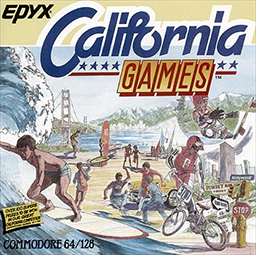
California Games is a sports video game released by Epyx for the Apple II and Commodore 64 in 1987. Branching from their Summer Games and Winter Games series, this game is a collection of outdoor sports purportedly popular in California. It ported to other home computers and video game consoles and was the pack-in game for the Atari Lynx when that system launched in 1989. The game was successful and spawned a sequel, California Games II.

Xenon 2: Megablast is a 1989 shoot 'em up video game developed by The Bitmap Brothers and published by Image Works for the Amiga and Atari ST. It was later converted to the Master System, PC-98, X68000, Mega Drive, Commodore CDTV, Game Boy, Acorn Archimedes and Atari Jaguar platforms. The game is a sequel to Xenon and takes place a millennium after the previous title. The goal of the game is to destroy a series of bombs planted throughout history by the Xenites, the vengeful antagonists of the first game.

Tynesoft Computer Software was a software developer and publisher in the 1980s and early 1990s.
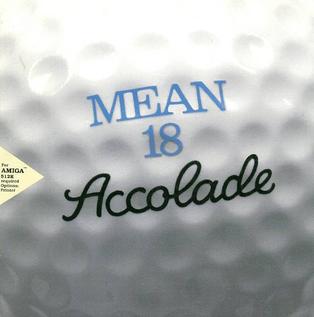
Mean 18 is a golf video game designed by Rex Bradford with graphics by George Karalias, both of Microsmiths, and released by Accolade for MS-DOS compatible operating systems in 1986. It was ported to the Amiga, Apple IIGS, Atari ST, and Macintosh. It includes an editor allowing players to create their own courses. In 1989, Atari Corporation published a port for the Atari 7800 console. A version for Atari 8-bit computers was in development in 1989 but was cancelled.

Hostages is a 1988 tactical shooter video game developed and published by Infogrames for the Acorn Electron, Archimedes, Atari ST, Amiga, Apple IIGS, Amstrad CPC, BBC Micro, Commodore 64, MS-DOS, MSX, Nintendo Entertainment System, and ZX Spectrum. The game depicts a terrorist attack and hostage crisis at an embassy in Paris, with the player controlling a six-man GIGN counterterrorist team as they are deployed to defeat the terrorists and free their hostages.

Toki is a run and gun platform game released in arcades in Japan in 1989 by TAD Corporation. It was published in North America by Fabtek. Designed by Akira Sakuma, the game has tongue-in-cheek humor mixed with the action. The player controls an enchanted ape who must battle hordes of jungle monsters with energy balls from his mouth. The ultimate goal is to destroy the evil wizard who cast a spell on the title protagonist; thereby transforming him from an ape back into a human, and rescuing the kidnapped princess. The game was ported to several video game consoles and home computers.
Phillip Nixon is a British composer and graphic designer for video games. His most notable role was as a member of Flair Software during the 1990s, as an artist, musician and game designer. More recently, he had been part of Rage Software plc until the company went bust in 2003. Nixon has also had other roles working with Millennium Interactive, Hirographics and Horror Soft.

Falcon is a combat flight simulator video game and the first official entry in the Falcon series of the F-16 jet fighter's simulators by Spectrum HoloByte. Originally developed by Sphere for Macintosh and MS-DOS in 1987 and ported to several platforms between 1988 and 1992, the game earned commercial success and critical acclaim.
Scetlander was a software publisher which released titles for various 8- and 16-bit home computer systems in the 1980s and 1990s.
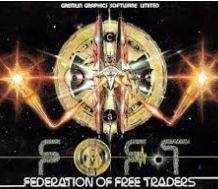
Federation of Free Traders is a space trading video game released in 1989 for the Amiga and Atari ST. The game is similar in scope to Elite, involving space simulation and exploration tilted towards trading. The player is tasked with exploring and discovering the billions of procedurally generated galaxies and planets. The game was developed and published by Gremlin Interactive.

Chrono Quest is an adventure game released in September 1988 for the Amiga and Atari ST. It was developed by French developer Infomedia and published by 16/32 Diffusion in France and Psygnosis in the United Kingdom. Chrono Quest is an historical adventure where the player travels to different time periods on a quest to find their father's true murderer. The box art was designed by Roger Dean.

Steve Davis World Snooker is a sports simulation video game developed by Binary Design and published by CDS Software. It simulates different types of cue sports, specifically snooker, pool and billiards. Released under licence from 6-time Snooker World Champion, Steve Davis, it is a sequel to their 1984 game Steve Davis Snooker.
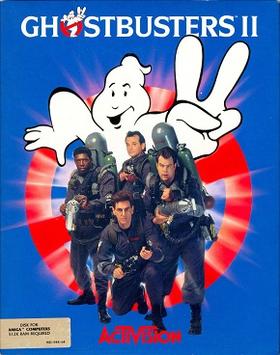
Ghostbusters II is a 1989 action game based on the film of the same name. It was published by Activision for various computer platforms. British studio Foursfield developed a version for Commodore 64, Amiga, Atari ST, Amstrad CPC and ZX Spectrum, which also got ported to the MSX by New Frontier. It features three levels based on scenes from the film. Dynamix developed a separate version for the DOS, also based on the film. The non-DOS versions were praised for the graphics and audio, but criticized for long loading times, disk swapping, and the final level. The DOS, Commodore 64 and Amiga versions were the only versions released in North America.
















